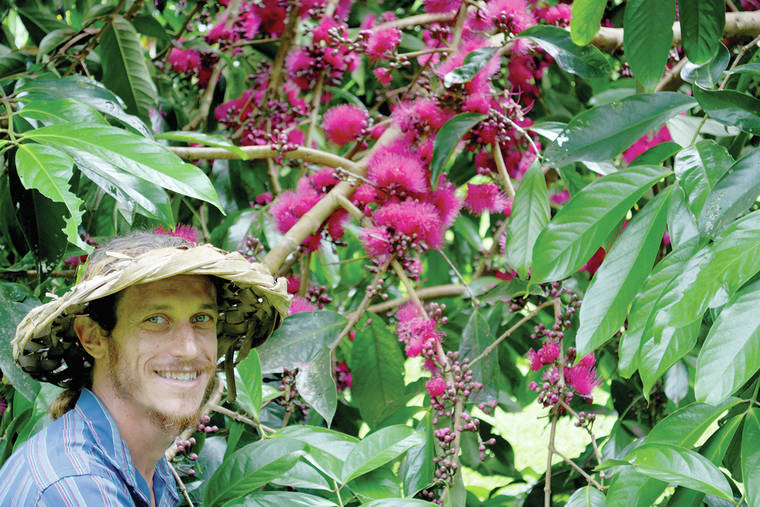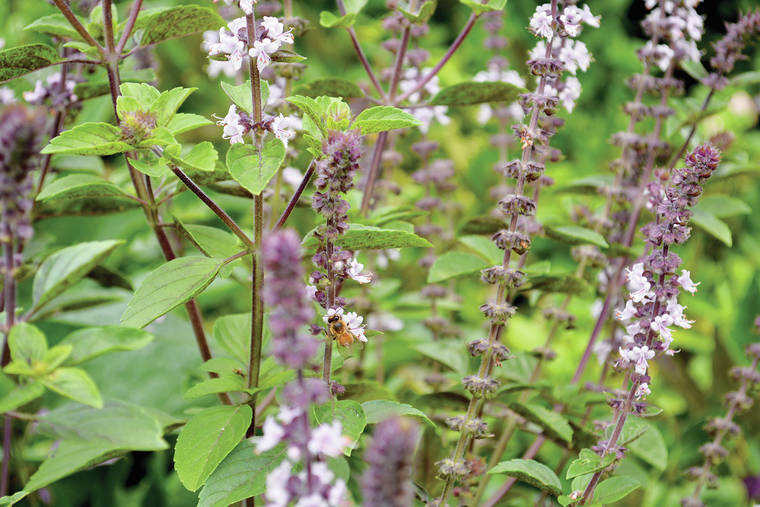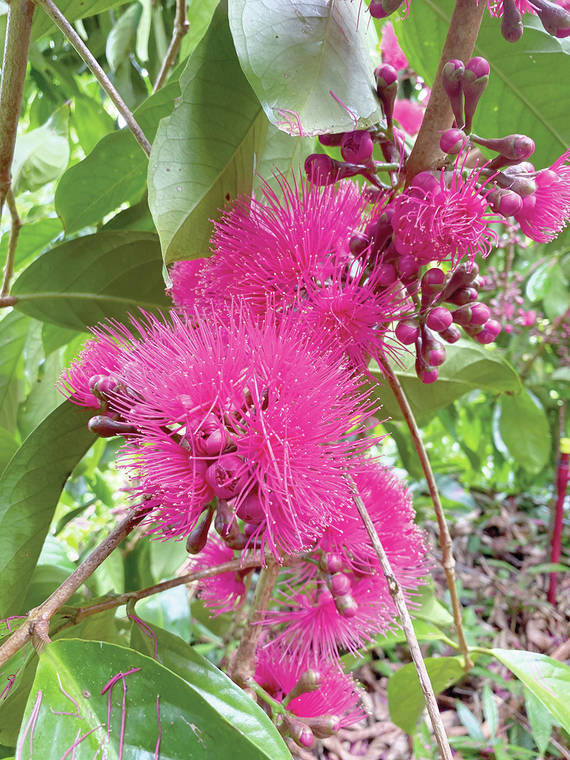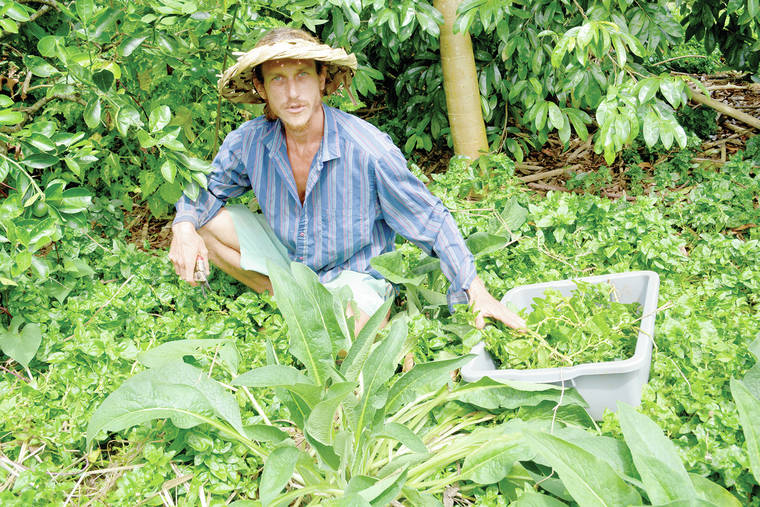KILAUEA — In 1943, the U.S. Department of Agriculture encouraged everyone to grow their own “Victory Gardens” in their yards to fight against hunger and poverty during the war as a line of defense against food scarcity across the country.
It’s a move that happened during the first world war as well, and now, in a time of global pandemic when many people are jobless and hungry, “Victory Gardens” are making a comeback.
And some agriculture experts are promoting permaculture as a sustainable way to grow your own food in your backyard.
James Trujillo, a professor and sustainability coordinator at Kauai Community College, explains that permaculture is a food-production system that works with nature to grow food, relying on existing resources instead of outside inputs like synthetic fertilizers.
“Permaculture encourages the development of strategies to build and grow resources locally, to leverage the connections between ecosystems and human existence,” said Trujillo.
Trujillo said permaculture is often described as “permanent agriculture,” but it goes beyond that. It is an ethics-based, principle-centered approach to living within limits of finite resources.
Some of the principals include planning plantings according to natural water cycles and pathways, using compost and organic inputs, and organizing plants according to how the species interact; for example, pairing a shade-providing plant with one that prefers a shady environment. Over time, these concepts lead to a food-production system that feeds off of itself and produces a high yield.
Countermeasures to COVID-19 have illuminated known weaknesses in Hawai‘i’s food supply — most of which is shipped into the state — and underline Gov. David Ige’s longtime goal to double local food production by this year, a goal he’s talked about since 2014.
“COVID-19 has shown how fragile our systems are,” Trujillo said.
“Our health-care systems, our transportation systems, our financial systems, our social systems, have all be taxed to the breaking point,” said Trujillo. “Our food system is no exception, and and it is at the core of humanity’s existence. I’m not sure who said it first, but they were spot on: ‘if we no mo’ food, we no mo.’”
The Kaua‘i Food Forest in Kilauea is a living example of a permaculture project, led by stewards Rob Cruz and Paul Massey, among others.
Cruz was recently deep in the shade of his forest, propagating sesu, or Brazilian spinach. He explained the principles of permaculture within the Kaua‘i Food Forest. Like any garden, he said, the planting starts with understanding the reasons why you’re putting plants in the ground. “Is it to feed ourselves or to make money?”
The Kaua‘i Food Forest is planted to feed people. It’s also organized to maximize shade and create the best growing environment for a variety of edible and usable plants.
It’s also important to plan what will be in the garden and to know how those species will interact, he said.
Cruz explained the concept, pointing out the way the food forest is organized to maximize shade and create the best growing environment for a variety of plants.
Cruz acknowledges three main teachers that have helped form an understanding of how to work with an ecosystem to grow food: online permaculture teacher Geoff Lawton, holistic grazing management promoter Allan Savory and agroforestry teacher Ernst Gotsch.
All these teachers emphasize a switch from industrialized agriculture to a localized, symbiotic and permaculture-focused, food-production model.
Permaculture and food-forest-type gardens can come in all shapes and sizes and can be created in a backyard. It takes an understanding of how much sun and shade an area gets, moisture content in soils, and how to use dead plant material to enrich the soil around existing plants. Time frames for growing vary.
“It is all situational and dependent on your climate, location and what you are planting,” said Trujillo.
”It could be less than 60 days for some fast-growing crops like lettuce, spinach, tatsoi, radish, but some crops take longer, like tomatoes, squash, melons or tubers like potatoes, taro and yams. Fruit trees take even longer,” said Trujillo.
“Planting gardens for food production is not as hard as you think, but it does require effort, planning and continued investment of time.”
Trujillo believes that since COVID-19 more people are looking at ways to grow more food to strengthen Kaua‘i’s local food system by relying less on imported produce.
“From citrus to mango, papaya and avocado along with ulu (breadfruit), maia (banana) and niu (coconut), these tree yield plenty on the island. Along with staples like kalo, u‘ala, cassava and leafy vegetables like kale, won bok and pak choi, we have great potential to feed our families, our communities and our desire for a sustainable future,” said Trujillo.
Additional Kaua‘i growing resources: Go Farm, Malama Kaua‘i, Kaua‘i Chapters of the Hawaii Farmer’s Union and the Hawai‘i Farm Bureau.
•••
Stephanie Shinno, features and community reporter, can be reached at 245-0424 or sshinno@thegardenisland.com.






We’ve got ours!